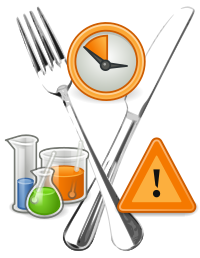
Photo from wikipedia
The horticultural sector is a key contributor to Kenya’s gross domestic product through the export of fresh-cut flowers, fruits and vegetables to various niche markets. It employs over 350,000 people,… Click to show full abstract
The horticultural sector is a key contributor to Kenya’s gross domestic product through the export of fresh-cut flowers, fruits and vegetables to various niche markets. It employs over 350,000 people, while about six million depend on it. However, the sector is constrained by the strict technical and phytosanitary quality requirements set by the export markets. The phytosanitary concerns include the presence of pests and microbial contaminants, while the presence of chemical residues constitute the major technical challenge. These constraints cause the interception and rejection of produce at the export destinations. The fresh produce should be free of quarantine and regulated non-quarantine pests, pest damage, pesticides above the stipulated maximum residue levels (MRLs) and phytosanitary certification. This review discusses the following four-tiered approach to compliance with phytosanitary and pesticide residue requirements: (i) use of alternative pest management approaches, including biocontrol options, cultural and physical practices; (ii) collaboration among regulatory agencies, institutions, producers and regional countries in the enforcement of standards; (iii) investment in research and the adoption of innovative technologies; (iv) awareness creation and training of actors along the fresh vegetable value chain. It is envisaged that this approach will contribute to sustainable fresh vegetable value chains, leading to improved access to export markets, and increased export volumes and income to smallholder farmers and other actors in the fresh vegetable value chain.
Journal Title: Sustainability
Year Published: 2022
Link to full text (if available)
Share on Social Media: Sign Up to like & get
recommendations!